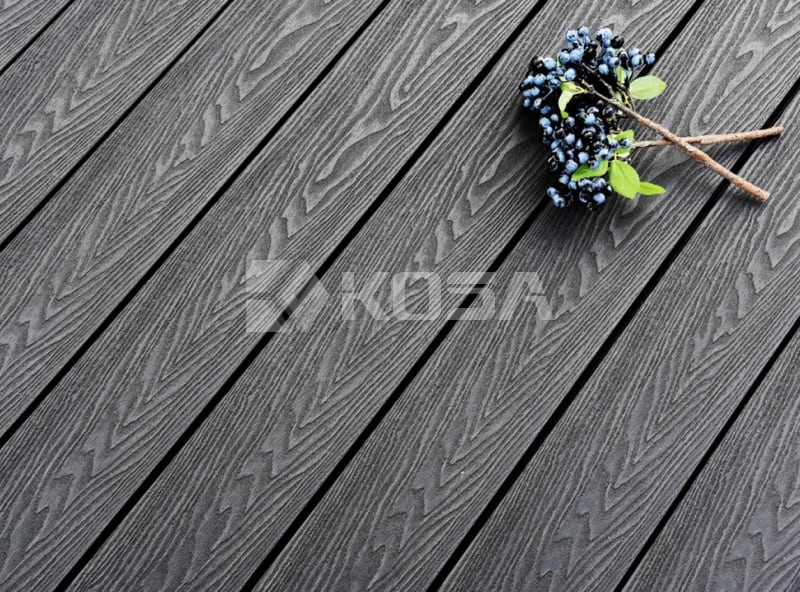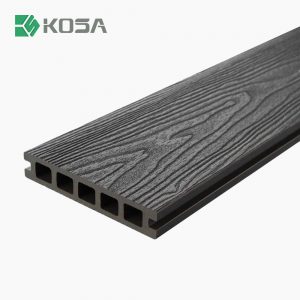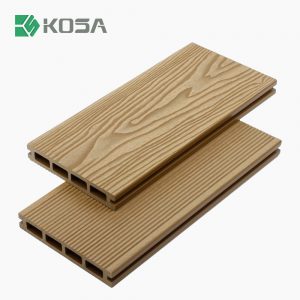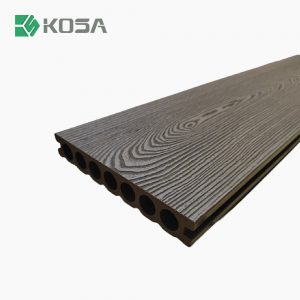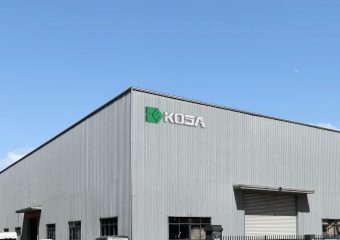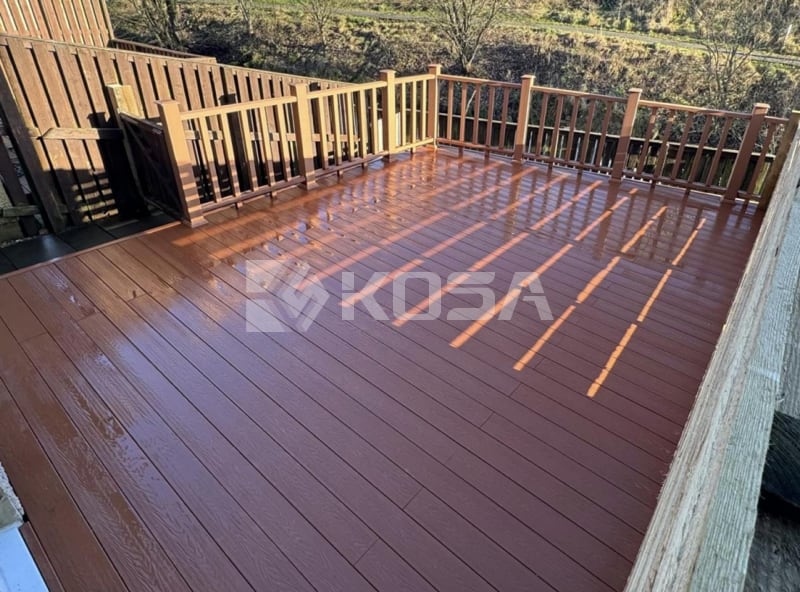
1. Performance Comparison
Anti slip performance
3D embossed composite decking: The unique deep embossed design increases the roughness of the decking surface, making the floor have better anti slip performance. This texture can provide more friction, effectively reducing the risk of slipping in both dry and humid environments. For example, when water is sprinkled on a 3D deep textured floor, the water will fill the grooves of the texture, while the raised parts can still maintain good contact with the sole or foot, providing sufficient friction.
Traditional wooden decking: Some traditional wooden flooring has a relatively flat and smooth surface. In humid environments, if it encounters water or other liquids, its anti slip performance will significantly decrease. Wooden decking may become more prone to slipping due to absorbing moisture.
Anti fading performance
3D embossed composite decking: During the production process, raw materials are added with UV resistant and antioxidant additives, which can effectively protect the color of the flooring. The surface structure of deep embossing also helps to reduce the impact of direct sunlight on color, as light scatters on textured surfaces, unlike concentrated illumination on smooth surfaces. For example, 3D embossed composite decking that has been used outdoors for a long time has relatively little color change after years of exposure to sunlight.
Traditional wooden decking: Without special treatment, traditional wooden decking will gradually fade under sunlight. And some painted or dyed wooden floors may gradually decompose the color layer on the surface due to the influence of ultraviolet radiation.
Wear resistance performance
3D embossed composite decking: typically made of advanced composite materials, such as wood powder and plastic, which have high hardness and strength. The deep embossed structure not only has a distinctive appearance, but also enhances the wear resistance of the floor to a certain extent. For example, when heavy objects are dragged on the floor, deep embossing can disperse the pressure and reduce direct wear on the floor surface. And its material itself can resist daily friction and scratching, making it less prone to scratches and wear marks.
Traditional wooden decking: Traditional wooden decking is relatively soft and easily scratched by sharp objects. After long-term use, the surface will show wear and dents. Even after some surface treatment, its wear resistance is still limited.
2. Stability advantages under different climatic conditions
Hot Climate
3D embossed composite decking: Wood plastic materials have a lower coefficient of thermal expansion, which means that in hot weather, they will not expand significantly like some traditional materials. The deep embossed structure also helps with heat dissipation and reduces the accumulation of heat on the floor surface. For example, in the hot summer, 3D embossed composite decking will not show significant deformation or warping due to temperature rise, and can maintain a flat appearance and stable performance.
Traditional wooden decking: Traditional wooden decking is prone to absorbing heat and expanding in hot climates. If sufficient expansion space is not reserved during installation, arching may occur.
Cold climate
3D embossed composite decking: It has good cold resistance and will not become brittle due to low temperatures. The flexibility of its material can still be maintained under cold conditions and will not crack as easily as some traditional flooring materials. For example, in the cold winter, 3D embossed composite decking can withstand low temperatures without breaking or damaging, and its anti slip performance remains effective at low temperatures without being lost due to icing or other conditions.
Traditional wooden decking: Wooden decking may shrink in cold and dry environments, causing gaps to widen and affecting aesthetics and usability.
Humid climate
3D embossed composite decking: Due to its excellent waterproof performance and deep embossed structure, it can prevent moisture from penetrating into the interior of the flooring. Even in humid environments such as coastal or rainy areas, it can effectively prevent moisture from eroding the floor. For example, during the humid rainy season, 3D embossed composite decking will not expand, deform, or mold due to moisture absorption, and can maintain a good condition.
Traditional wooden decking: Wooden decking is prone to absorbing moisture in humid climates, leading to expansion, deformation, and even decay. Although tile decking itself is waterproof, the gaps between tiles may absorb moisture, causing the base to become damp and potentially affecting the firmness of tile adhesion over time.
In summary, 3D embossed composite decking has significant advantages over traditional wooden decking in terms of slip resistance, wear resistance, and fade resistance, and exhibits better stability under different climatic conditions, making it a superior decking choice.
